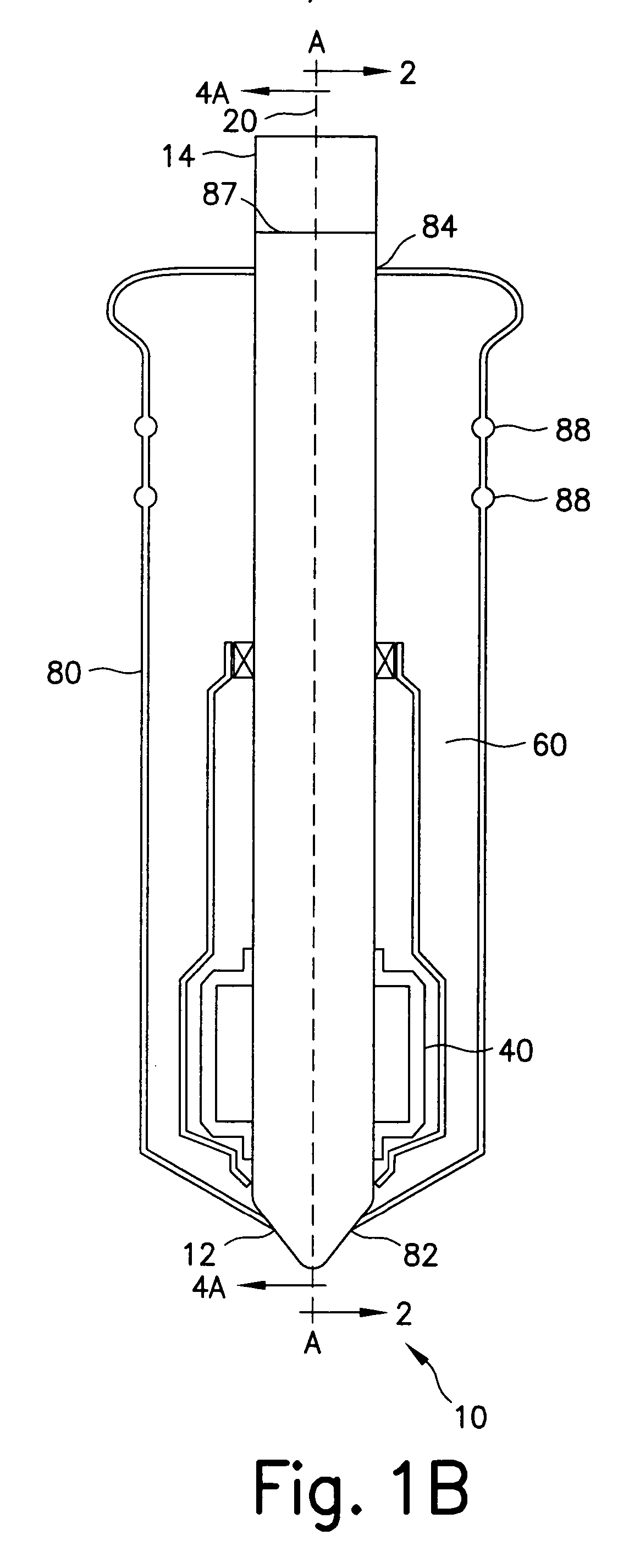Balloon-in-balloon cervical canal dilator
a cervical canal and balloon technology, applied in balloon catheters, surgery, other medical devices, etc., can solve the problems of insufficient cervical balloon design, damage to the uterus, and failure to dilate the full length of the cervix, so as to reduce the diameter of the catheter for insertion
- Summary
- Abstract
- Description
- Claims
- Application Information
AI Technical Summary
Benefits of technology
Problems solved by technology
Method used
Image
Examples
Embodiment Construction
[0036] Referring now in specific detail to the drawings in which like referenced numerals identify similar or identical elements throughout the several views, and initially to FIG. 1A, a novel cervical canal dilator assembly 10 is shown having a shaft 20, a first inflatable member 40, a second inflatable member 60 and a control system 90 (see FIG. 3A). Cervical canal dilator assembly 10, hereinafter referred to as “dilator 10” has a distal end 12 and a proximal end 14 defining a longitudinal axis-A.
[0037] Referring now to FIGS. 1A, 1B, 2, 3A, 3B, 3C, 4A and 4B, shaft 20 has a distal end portion 22 and a proximal end portion 24 aligned with first longitudinal axis-A. Distal end portion 22 includes a tip 21 having a solid circular base 21a and a tapered or conical outer shape. Tip 21 is advantageously shaped for ease of insertion into the cervical canal of the patient. Shaft 20 has a cylindrical outer surface 32. Proximal end portion 24 is connected with control system 90.
[0038] Sha...
PUM
 Login to View More
Login to View More Abstract
Description
Claims
Application Information
 Login to View More
Login to View More - R&D
- Intellectual Property
- Life Sciences
- Materials
- Tech Scout
- Unparalleled Data Quality
- Higher Quality Content
- 60% Fewer Hallucinations
Browse by: Latest US Patents, China's latest patents, Technical Efficacy Thesaurus, Application Domain, Technology Topic, Popular Technical Reports.
© 2025 PatSnap. All rights reserved.Legal|Privacy policy|Modern Slavery Act Transparency Statement|Sitemap|About US| Contact US: help@patsnap.com



